A Quiet Cabin and Quality Tech Make the 2024 Hyundai Kona
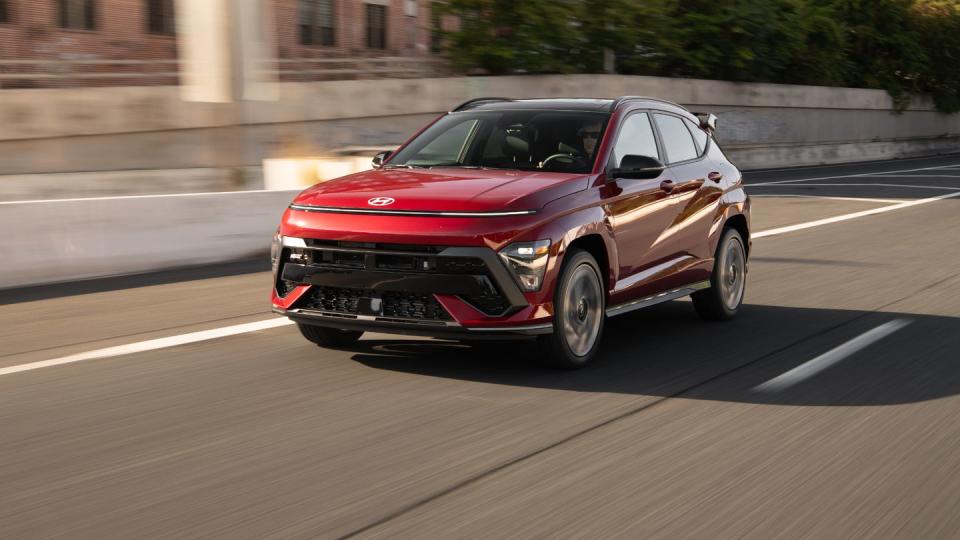
Hyundai has shifted to a nearly 75% crossover/SUV mix, and its 2024 lineup is shaping up to showcase its innovative manufacturing prowess.
Revamped for 2024, the Hyundai Kona has been refreshed on a modular, EV-first platform with two ICE powerplants also available.
New interior technology, improved noise canceling, and competitive pricing make the Hyundai Kona a stable, quiet compact crossover option.
Without getting too philosophical, there's a certain comfort in the mundane tasks our cars shuttle us to and from. For some of us, time spent behind the wheel before clocking in or en route to cyclical daily errands are the only fleeting moments of solitude we're allowed.
That doesn't mean it is peachy, either, but heated seats and medium-grade speakers blasting music of your choosing offer a small respite in an otherwise traffic-snarled, parking-challenged, bad-driving world. If you truly spend much of your day navigating these stressors, it's worth investing in what makes you comfortable, no matter the vehicle.
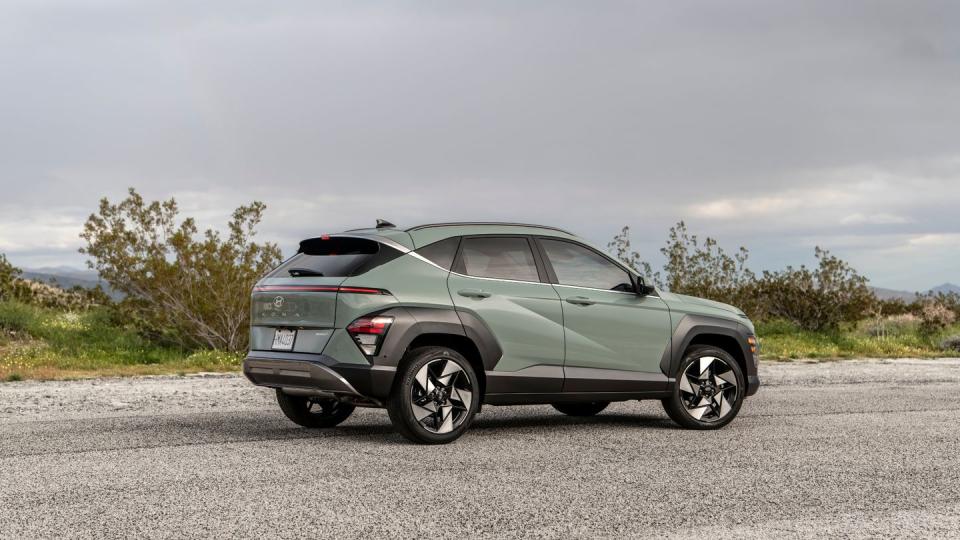
Hyundai wants that investment to be accessible to everyone, spurred on by the release of the 2024 Hyundai Kona lineup. Launched in 2017, the Kona is Hyundai's compact crossover offering, competing with the likes of Subaru's Crosstrek and the Chevrolet Trax. In other words, the Kona has been fighting for buyers in one of the most crowded segments to date.
And it has been struggling to fight back lately. Selling a respectable 90,000 Konas in 2021, sales dramatically dropped to 63,000 units in 2022. By comparison, Subaru sold over 155,000 Crosstreks while Honda sold over 115,000 HR-Vs last year. All signs pointed toward a refresh, especially considering the original body style was five years old.
But Hyundai didn't want to simply tack some new bumpers on, throw out some positive percentages, and call it a day. In fact, Hyundai went the extra mile with the 2024 Kona, developing it EV-first, then adapting it to accommodate an internal-combustion engine.
This only makes sense, particularly considering Hyundai's deep investments into EV manufacturing, stateside and beyond. Just this year, 19% of Hyundai models sold in the US are either battery-electric, plug-in hybrid-electric or simply hybrid-electric. But the 2024 Kona Electric wasn't quite ready when I got a chance to drive the all-new crossover.
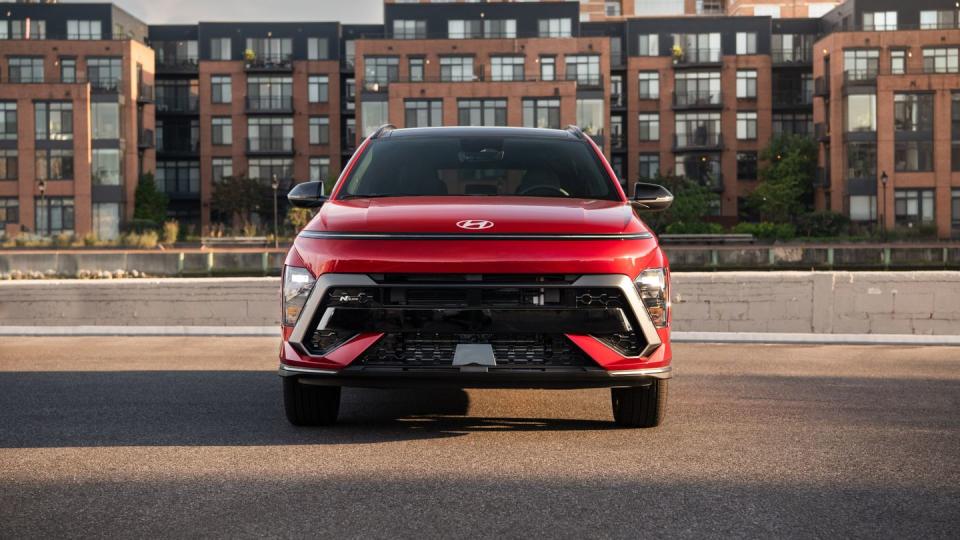
Instead, I spent a day driving the 2024 Hyundai Kona Limited and Kona N-Line in Charleston, South Carolina. Puttering around the small port city, parking in suburban strip malls, and ascending a few nerve-wracking bridges may not sound like the Alps shredding tales you're used to hearing, but it's where the Kona excels.
Despite being nearly six inches longer, an inch wider, and featuring a 2.4-inch longer wheelbase, the Kona retains two of its best features: a 17.4-foot turning radius and a dwarfing exterior.
Even with six extra cubic feet of trunk space and a bigger body, it's easy to mistake the Kona for a buff hatchback, and that's because it is several inches shorter than its competitors.
This petite sizing carries over into its maneuvering manners. Navigating through the poorly planned, concrete curb minefield that is a suburban parking lot was a breeze, with light steering feedback and a slightly above-par radius. Better yet, the panoramic backup camera provides ample context of what's behind you, even walled in by two minivans.
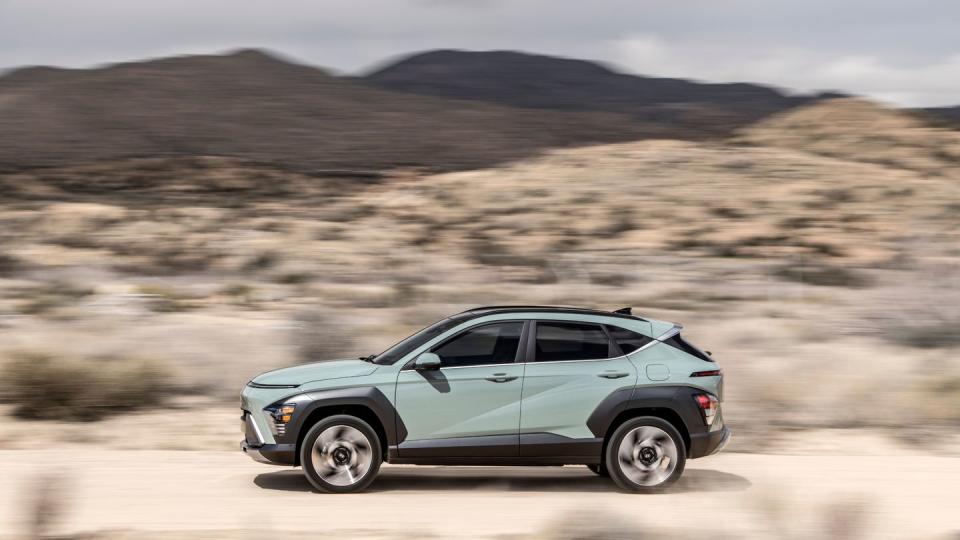
Its smaller size doesn't mean you're expected to scrunch up, however. With a total of 126.7 cubic feet of interior volume, Hyundai has managed to add 3.3 inches of headroom up front and three inches of legroom in the rear, making it most closely matched to the Honda HR-V and Subaru Crosstrek.
In practice, the Kona provides luxurious legroom up front and a normal amount in the rear, at least for my 5-foot-8 frame.
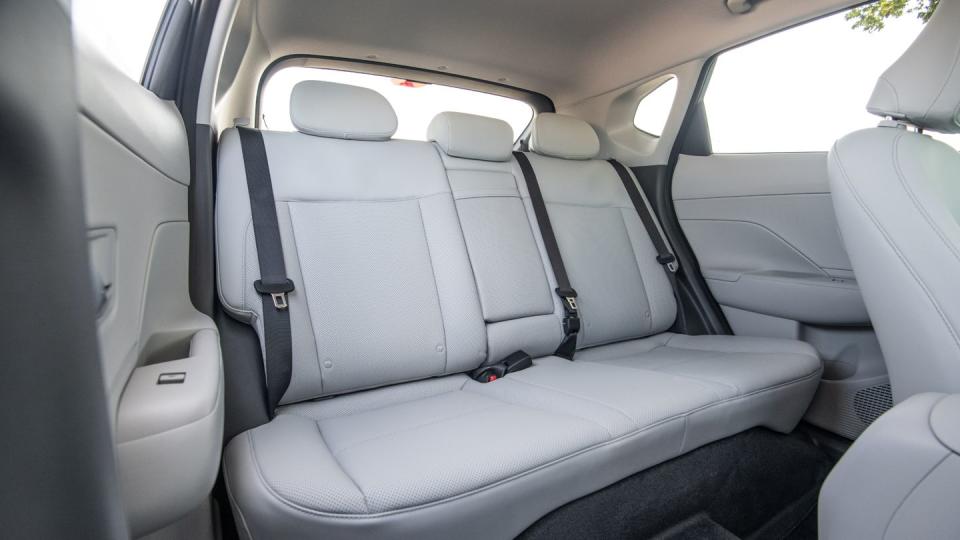
That's by design it seems, as the Kona previously offered subpar rear legroom. In contrast to its visual effect, it looks like you're in a burly SUV behind the wheel, partially influenced by the amount of free space you find around yourself.

 Yahoo Autos
Yahoo Autos 